The EpicGear Defiant Mechanical Gaming Keyboard Review
by E. Fylladitakis on May 11, 2016 9:00 AM ESTThe EpicGear Defiant Mechanical Gaming Keyboard
The design of the Defiant is minimalistic, with the top of the keyboard being a flat anodized black aluminum plate. The bottom half of the keyboard is plastic, with an orange rubber cable support on the back of the keyboard. The company’s logo is engraved onto the rubber support. It is a standard 104 keys ANSI layout keyboard with a 6.25× Spacebar and seven 1.25× bottom row keys. The keycaps are made from ABS plastic and have large, futuristic characters.
With the exception of the volume control wheel at the top right side of the keyboard, there are no extra macro/media keys on the Defiant. The metallic wheel is very robust and also works as a button that can be used to mute the system. For additional functions, EpicGear replaced the left Windows key with a Fn key featuring the company logo. By holding the Fn key pressed, the F5-F8 keys can be used for media functions, PgUp/PgDn change the key rollover limit between six and n (infinite) keys and F11/F12 keys can be used for special backlighting programming functions.
For some strange reason, EpicGear engraved their logo across the entire underside of the keyboard. There are five anti-skid pads, plus two on the height adjustment feet.
There are no USB pass through ports or other extra buttons on the Defiant by default. EpicGear will be providing modular accessories for the keyboard in the nearby future, but we cannot comment on them as none are ready at the time of this review. Some of these accessories are wrist rests, extra panels with macro/programmable keys and rear bumpers with dedicated media keys and USB ports. How these will be attached on the main keyboard is a mystery. There are openings on every side of the keyboard for the accessories to latch into but there are no connectors, leaving us to assume that every accessory will be having its own cable and the openings are simply for attaching them.
The Defiant features white LED backlighting that is being well applied beneath the keycaps, with minimal light spilling around the keys. All of the keys are backlit, but the Fn and PgUp/PgDn buttons also serve as indicators and are being illuminated only when they are activated.
As we mentioned in the previous sections, EpicGear is using their own proprietary mechanical switches on the Defiant. We received our sample with Purple switches, which are similar to Cherry’s MX Blue switch. The manufacturer of these switches is a mystery, as we could not identify the OEM and GeIL did not want to share this information either. Their plastic body is a direct copy of the Cherry MX switch, but they are most definitely not made by Cherry. The use of bar stabilizers for the larger keys hints that as well, as Cherry is always using their patented cross supports.
With the top cover removed, and the switches along with it, we can have a look at the PCB of the Defiant. There are two gold plated contacts and one LED beneath every switch. Once a switch is attached, its two pins touch these contacts and the LED illuminated the transparent top part of the switch. Unfortunately, if an LED dies, replacing the switch is not going to help.
The heart of the Defiant is a Holtek HT32F1755 ARM processor. It has a maximum frequency of 72 MHz and 32 KB on-chip RAM, as well as 127 KB flash memory. A Holtek HT1632C driver is being used for the LEDs.


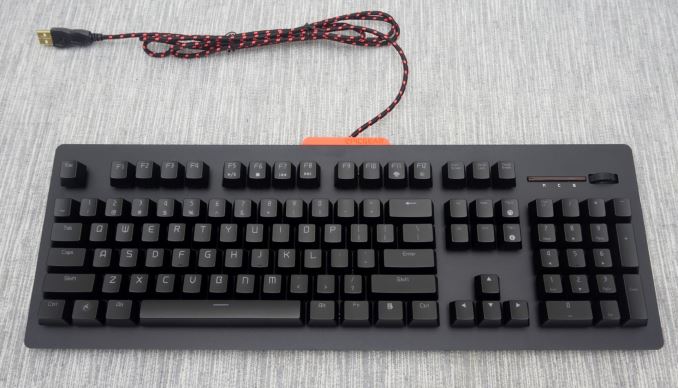
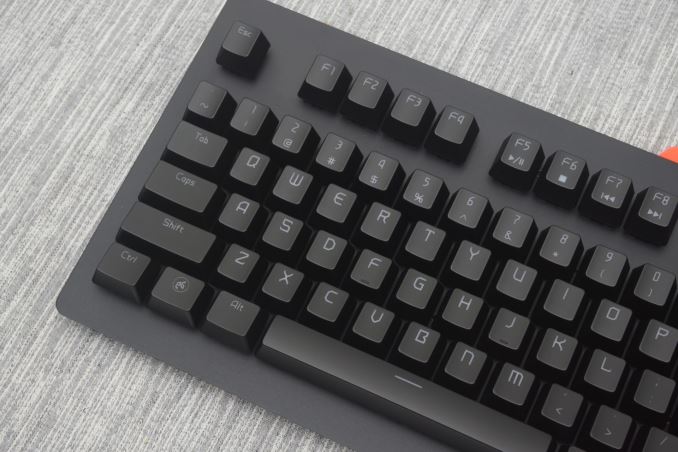
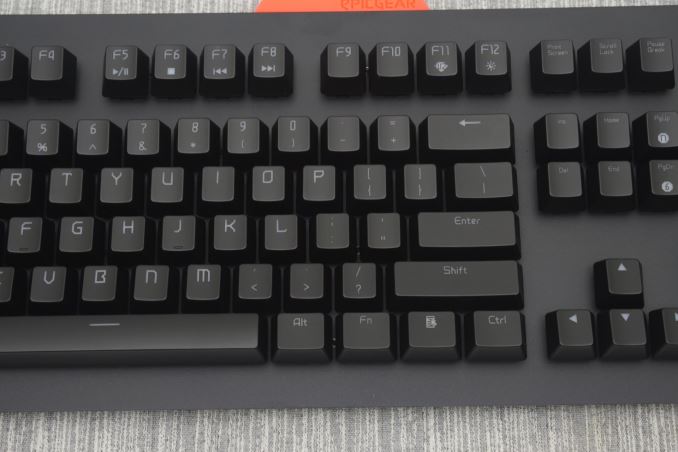
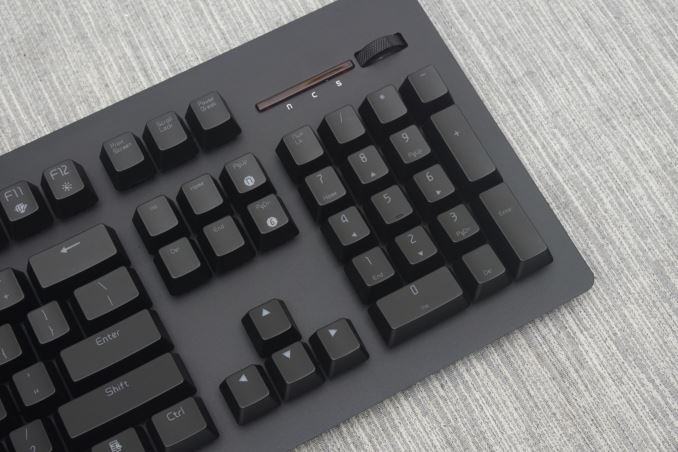
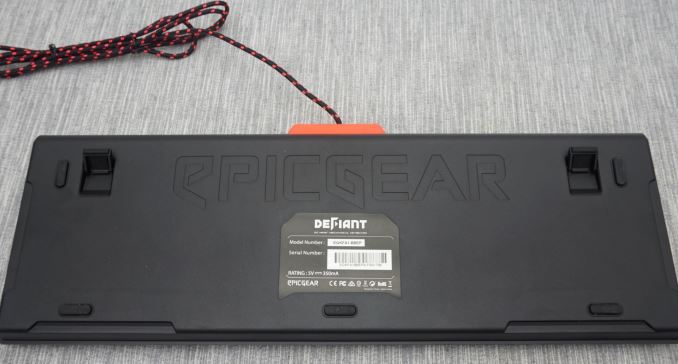
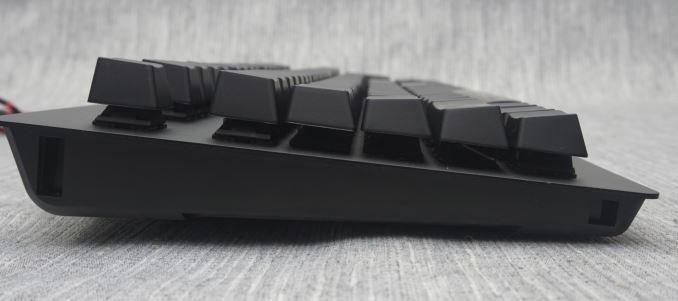
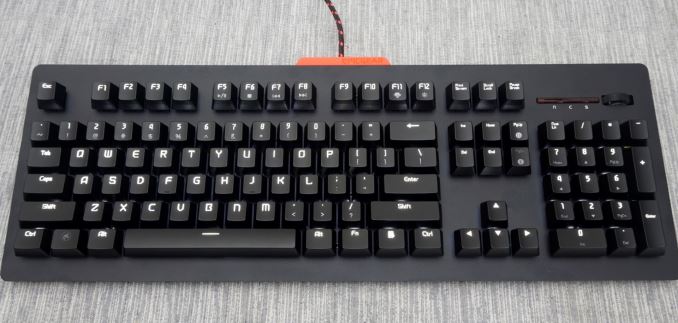
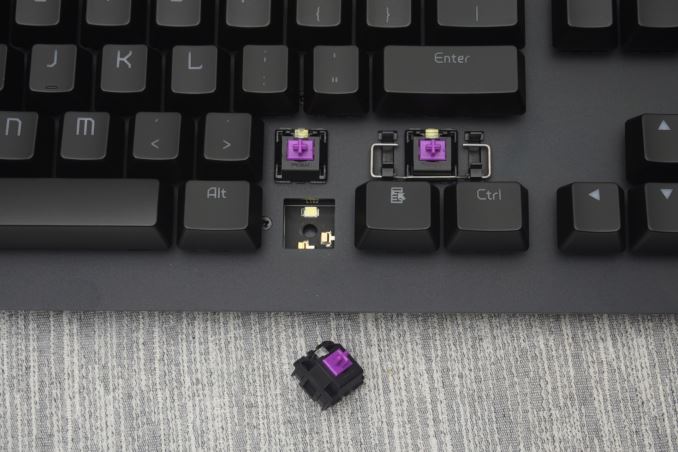
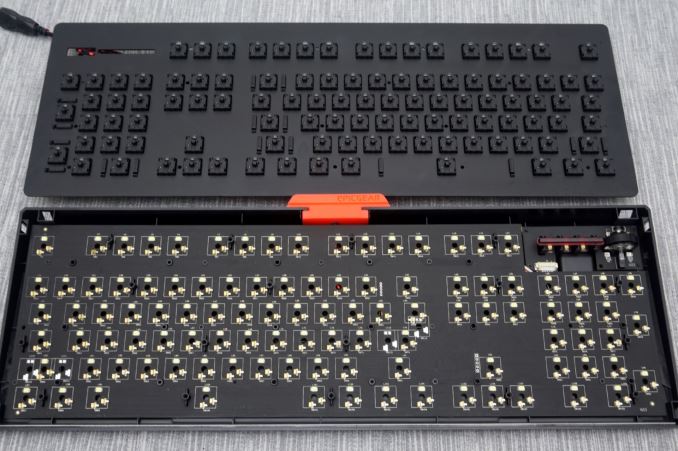
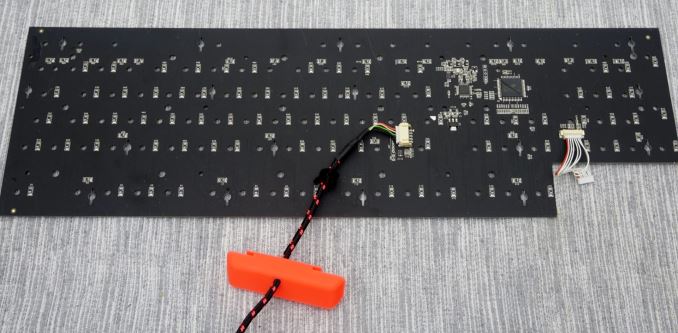
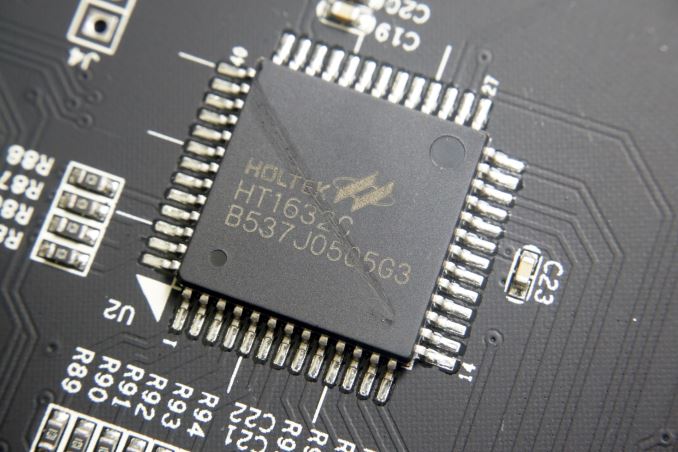
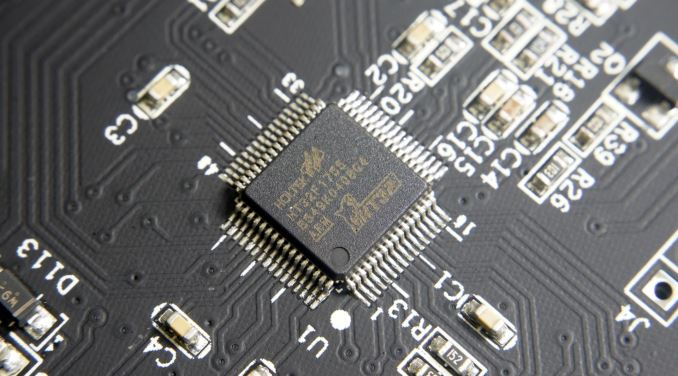








23 Comments
View All Comments
Samus - Wednesday, May 11, 2016 - link
I personally used a few Microsoft Natural 4000's for years, a few because they only last about 9 months before the keys start to bind (especially return and space bar)I found the layout just aggressive enough to be comfortable but not so aggressive that I was unable to go back to using a rectangular ANSI keyboard layout, which is inevitable since I work on multiple computers daily (I'm in IT) or even my own notebook.
Which is the real issue with the uber ergonomic designs. They are awesome once you are used to them, but it's like typing on hot ashes when you have to inevitably used a standard keyboard again at some point.
BrokenCrayons - Thursday, May 12, 2016 - link
The Natural 4000 was one of the models I tried using. I didn't have it long enough to test the longevity before I gave it away, but I older model MS Naturals suffered from the same key binding problems. I had some beige Natural from the early 2000s that I used in place of a Model M for a year or so and it was misery to use before it started to wear out, but after the keys turned crappy, it was a hand destroying monster.Anyway IIRC, I used the 4000 for three-ish months and it was disappointing that it made my wrists and hands feel just as bad, but much of my computing time involves typing because I write extensively so I'm always looking for an alternative design that will spare me the pain. It's important for my work and for my hobby writing books that I can type for hours. For me, the transition back to a flat keyboard was always a huge relief. I can't describe how much better it felt to use a normal keyboard on a laptop or netbook. Yeah, I realize that's an experience unique to me, but I was really disappointed that mechanical keyboards and ergo keyboards always fall short of making things better than a membrane board. At the moment, the least painful keyboard I've used is the one built into my workplace Dell Latitude e6440. Typing on it is fantastic and I've long since unplugged my docking station keyboard.
As for longevity, the only membrane keyboards I've managed to kill off are dead because I spilled tea on them or the MS keyboards that, after hearing about your experience with the 4000, might just have a long-running design problem. And there's an original Model M that I typed to death. My experiences with other cheap $10-20 keyboards and laptop/netbook keyboards is that they've all been pretty much bulletproof for as long as I've needed them.
erple2 - Saturday, May 21, 2016 - link
You can still buy the Model M today (sort of) - Unicomp bought the licensing rights to the buckling spring, and they can now be bought in USB varieties from pckeyboard (http://www.pckeyboard.com/page/category/UltraClass...Impulses - Wednesday, May 11, 2016 - link
They've already tested some ergo options, read thru back reviews.Ogewo - Wednesday, May 11, 2016 - link
Those reviews are few and far between. I'd like them to be numerous and close together.althaz - Thursday, May 12, 2016 - link
Those keyboards are pretty rare though, they are over-represented here, really.ACeeTee - Wednesday, May 11, 2016 - link
Just made an account to point out that this is not the first modular keyboard, Mad Catz has had the S.T.R.I.K.E 7 since 2012 and that is modular :/alexvoda - Wednesday, May 11, 2016 - link
I have not read the article yet, but I already spotted bulshit in the first paragraph.I quote: "which is the first modular and expandable mechanical keyboard"
Starting from the end:
- Yes, it is a keyboard
- Yes, it uses mechanical switches
- Expandable?? Umm, NO! Expandable means 1. to increase in extent, size, volume, scope, etc.; 2. to spread or stretch out; unfold; 3. to express in fuller form or greater detail; develop.
The keyboard on the IBM Thinkpad 701c is the only expandable keyboard I know of. You can see it in action here: https://www.youtube.com/watch?v=SLj3aCfqzOM
- Modular?? Umm, NO! The Azio Levetron Mech4 is modular. The Microsoft Sidewinder x6 is modular. The Tesoro Tizona is modular. The Ultimate Hacking Keyboard is very modular. This one? Not so much.
- First? As in first to use user replacable switches. Nope. AFAIK the Team Wolf Void Ray+ and the Team Wolf Zuque+ were launched before this one. And certainly the "Smart 68" was launched before all three.
hoarangE - Wednesday, May 11, 2016 - link
Personally, I think you are reading far to into that sentence, as it could have easily been a typo and read as "GeIL’s latest gaming keyboard, which is THEIR first modular and expandable mechanical keyboard and comes with EpicGear’s own proprietary switches" which would make your whole statement moot.Plus if you read more of the article, you would have seen that this product IS, in fact, modular (though the modular units were not available for review at this time).
Anyways, to the author, thanks for the article!
fanofanand - Wednesday, May 11, 2016 - link
The Razer Tarantula from circa 2006-2007 also had replaceable keys. Worst keyboard I ever bought.